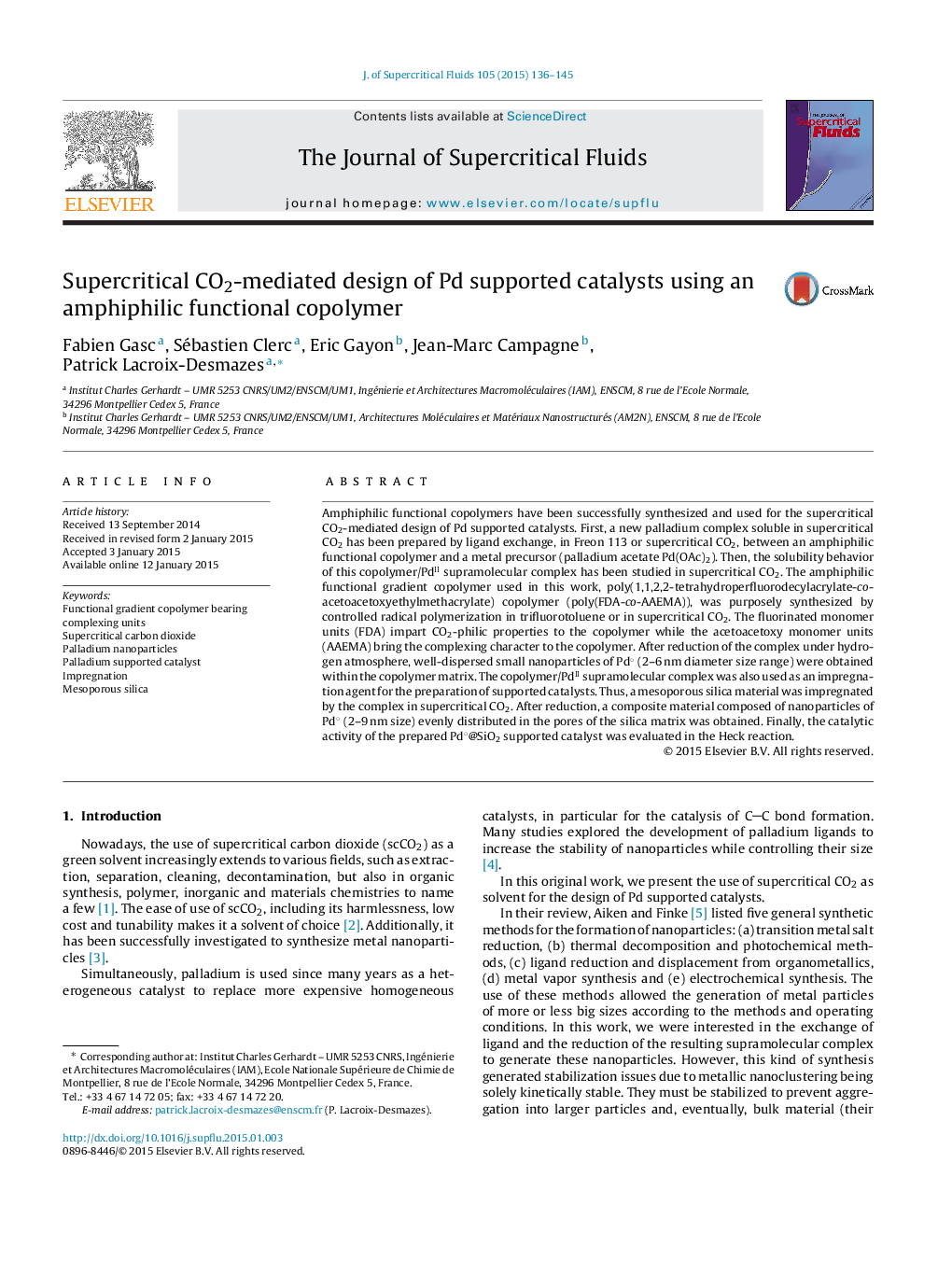| Article ID | Journal | Published Year | Pages | File Type |
|---|---|---|---|---|
| 230184 | The Journal of Supercritical Fluids | 2015 | 10 Pages |
•The Pd(II)/copolymer macromolecular complexes are highly soluble in scCO2.•Impregnation of mesoporous silica with Pd(II) complexes has been performed in scCO2.•Pd° nanoparticles are homogeneously dispersed in the mesopores.•The Pd°@SiO2 supported catalyst is active in Heck reaction.•The bottom-up approach is fully performed in supercritical CO2.
Amphiphilic functional copolymers have been successfully synthesized and used for the supercritical CO2-mediated design of Pd supported catalysts. First, a new palladium complex soluble in supercritical CO2 has been prepared by ligand exchange, in Freon 113 or supercritical CO2, between an amphiphilic functional copolymer and a metal precursor (palladium acetate Pd(OAc)2). Then, the solubility behavior of this copolymer/PdII supramolecular complex has been studied in supercritical CO2. The amphiphilic functional gradient copolymer used in this work, poly(1,1,2,2-tetrahydroperfluorodecylacrylate-co-acetoacetoxyethylmethacrylate) copolymer (poly(FDA-co-AAEMA)), was purposely synthesized by controlled radical polymerization in trifluorotoluene or in supercritical CO2. The fluorinated monomer units (FDA) impart CO2-philic properties to the copolymer while the acetoacetoxy monomer units (AAEMA) bring the complexing character to the copolymer. After reduction of the complex under hydrogen atmosphere, well-dispersed small nanoparticles of Pd° (2–6 nm diameter size range) were obtained within the copolymer matrix. The copolymer/PdII supramolecular complex was also used as an impregnation agent for the preparation of supported catalysts. Thus, a mesoporous silica material was impregnated by the complex in supercritical CO2. After reduction, a composite material composed of nanoparticles of Pd° (2–9 nm size) evenly distributed in the pores of the silica matrix was obtained. Finally, the catalytic activity of the prepared Pd°@SiO2 supported catalyst was evaluated in the Heck reaction.
Graphical abstractFigure optionsDownload full-size imageDownload as PowerPoint slide
